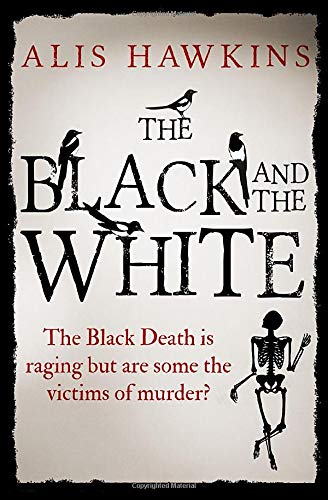The Black and the White
In 1349 the Black Death is sweeping across England. We meet Martin as he recovers from the brink of death to find his father dead and the small crude figure of Saint Cynryth, his father’s patron saint, nearby. Martin is convinced that the saint has cured him of the plague. When a larger, more beautiful statue of Saint Cynryth appears at the well, he sees this as a sign. He must return her to her shrine in Salster out of gratitude to her, and, with no priest available, he must seek prayers for his father’s unshriven soul. He buries his father, packs up the statue of Saint Cynryth, and sets out on a pilgrimage across England.
This book is that journey: the villains, peasants, clergy, and lords that he meets, the devastation of the plague he witnesses, and the dangerous conflicts he encounters. This is also a mystery. A naïve and vulnerable Martin joins up with Hob early in the journey. Hob has the physical strength and fighting skill to be Martin’s protector, but can he be trusted? Is he a murderer or a con man? We are left guessing as to who Hob is and what his intentions are. So many deaths along the way may not always be plague deaths. Martin begins to question his own sanity. Could he be unintentionally responsible for some of the murders and strange happenings, or is Hob messing with his mind?
Hawkins has done her research, and this medieval story is rich in authentic detail. Religious relics and superstition rule the people’s lives and provide solace in a menacing world. The book drags in places with plot repetition and Martin’s circular thoughts, and the ending falters with some unresolved plot points. This remains a worthwhile read for the engrossing account of medieval life during the plague.










